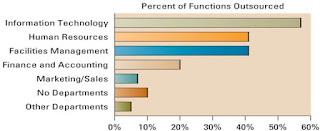MGT 300
CHAPTER 3 : Strategic Initiatives For Implementing Competitive
Advantages
STRATEGIC INITIATIVES
Strategic initiatives : Organizations
can undertake high-profile strategic initiatives including business process
reengineering (BPR), supply chain management (SCM), customer relationship
management (CRM), enterprise resource planning (ERP).
SUPPLY CHAIN MANAGMENT (SCM)
Supply chain management : The
management of information flows between and among activities in a supply chains
to maximize total supply chain effectiveness and profitability.
The effective and efficient of supply chain management system can enable an organization is
- Decrease
the power of its buyers
- Increase
its own supplier power
- Increase
switching costs
- Create
entry barriers
- Increase
efficient while seeking a competitive advantage through cost leadership
How effective and efficient of
supply chain management system can be effects on Porter's Five Forces
CUSTOMERS RELATIONSHIP
MANAGEMENT
Customers Relationship Management
(CRM) : a term that refers to practices,
strategies and technologies that companies use to manage and analyze customer
interactions and data throughout the customer life cycle, with the goal of
improving business relationships with customers, assisting in customer
retention and driving sales growth.
CRM systems
are designed to compile information on customers across different channels or
points of contact between the customer and the company that which could include
the company's website, telephone, live chat, direct mail, marketing materials
and social media. CRM systems can also give customer-facing
staff detailed information on customers' personal information, purchase
history, buying preferences and concerns.
Phases for CRM :
- Reporting
- Analyzing
- Predicting
BUSINESS
PROCESS REENGINEERING
Business process : A
collection of linked tasks which find their end in the delivery of a service or
product to a client. A business process has also been defined as a set of
activities and tasks that, once completed, will accomplish an organizational
goal.
Business Process Reengineering (BPR) : The
analysis and redesign of workflows within and between enterprises in order to
optimize end-to-end processes and automate non-value-added tasks.
Book that written by Hammer and Champy suggested
seven reengineering principles to streamline the work process and thereby
achieve significant levels of improvement in quality, time management, speed
and profitability:
1. Organize around outcomes, not tasks.
2. Identify all the processes in an organization and
prioritize them in order of redesign urgency.
3. Integrate information processing work into the
real work that produces the information.
4. Treat geographically dispersed resources as
though they were centralized.
5. Link parallel activities in the workflow instead
of just integrating their results.
6. Put the decision point where the work is
performed, and build control into the process.
7. Capture information once and at the source.
ENTERPRISE RESOURCES PLANNING
Enterprise Resources Planning (ERP)
: Business process management software
that allows an organization to use a system of integrated applications to
manage the business and automate many back office functions related to
technology, services and human resources.
Enterprise Resources Planning software integrates
all facets of an operation, including product planning, development,
manufacturing, sales and marketing.


Comments
Post a Comment